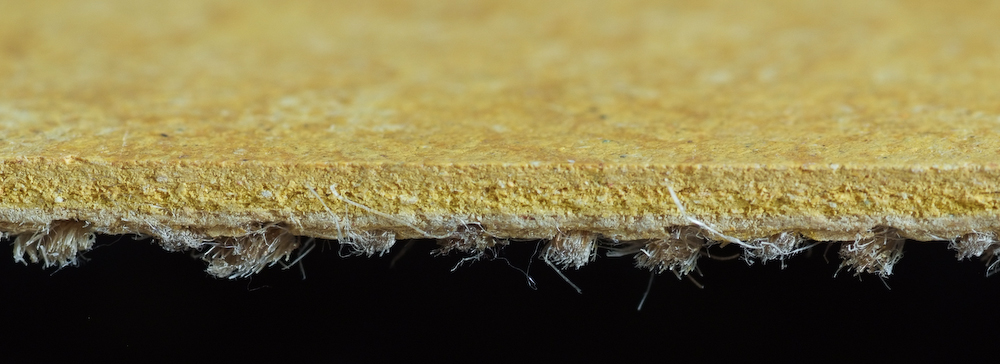In 1855, Englishman Frederick Walton noticed the rubbery, flexible skin of solidified linseed oil (linoxyn) on an old can of oil-based paint and thought that it might form a substitute for India rubber. After many trials and tribulations he developed Linoleum floor covering by mixing the linoxyn with pine rosin, ground cork dust, wood flour, and mineral fillers such as calcium carbonate, on a burlap or canvas backing.
Uses
- Floor coverings
- Wall coverings
- Printmaking: as a substitute for wood in wood cuts
Potential Uses
Lino is a natural composite with oxidised linseed oil as the binder, and demonstrates that such composites can have very useful properties; being stable over time, in sunlight, in contact with cleaning products, having a reasonable smell, being flexible and hardwearing and so on. Could such composites, perhaps with other natural fillers, be used as a replacement for plastics such as for furniture, casings and containers?
Processes
- Raw linseed oil oxidizes into linoxyn very slowly, but Walton accelerated the process by heating it with lead acetate and zinc sulfate.
- Fillers are mixed in to make it less tacky and have hardwearing properties.
- The oil is dripped down cotton canvas until sufficiently thick flat sheets are created.
More Information
- Good Wikipedia article

Please comment to help us improve this entry: